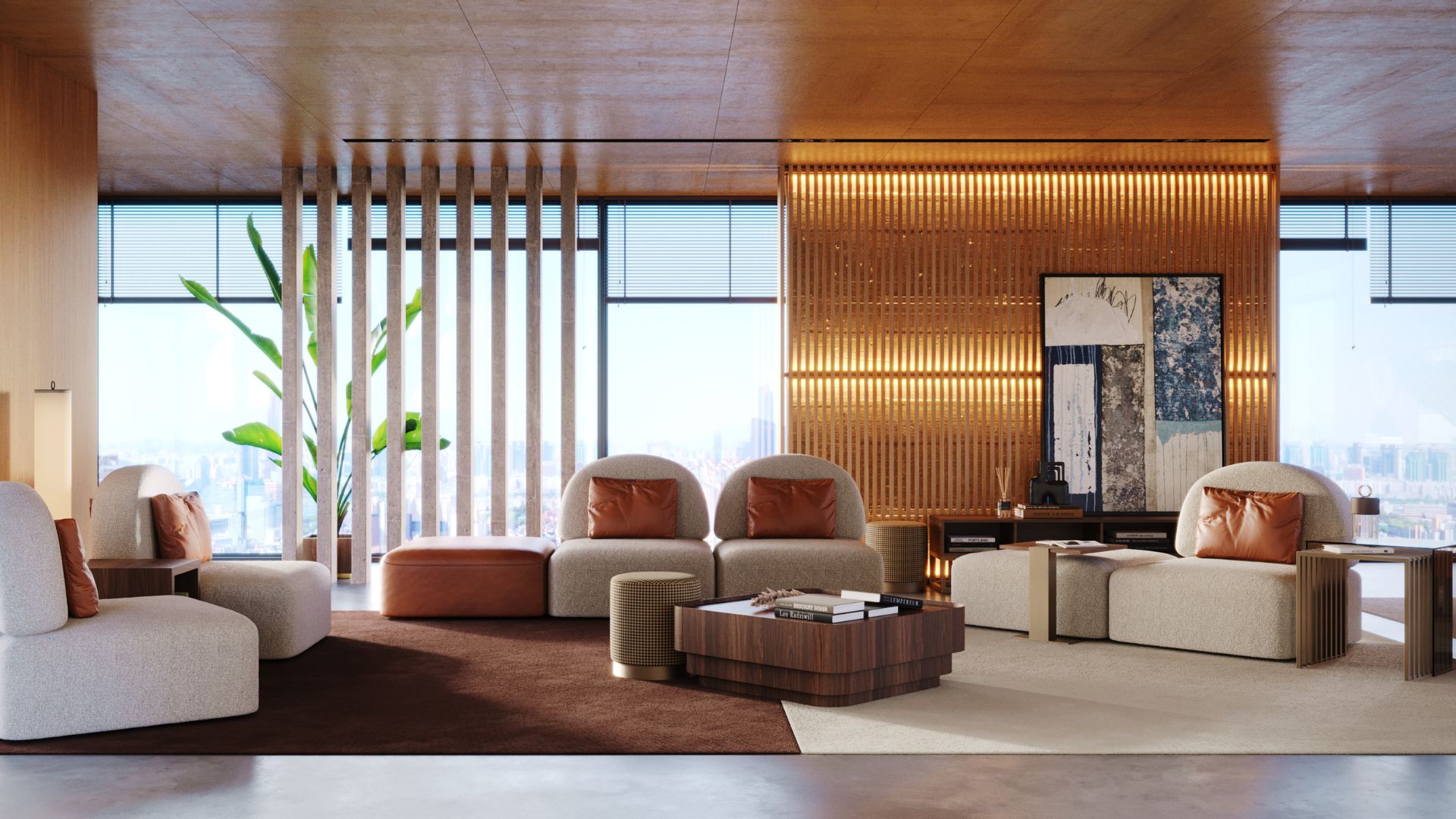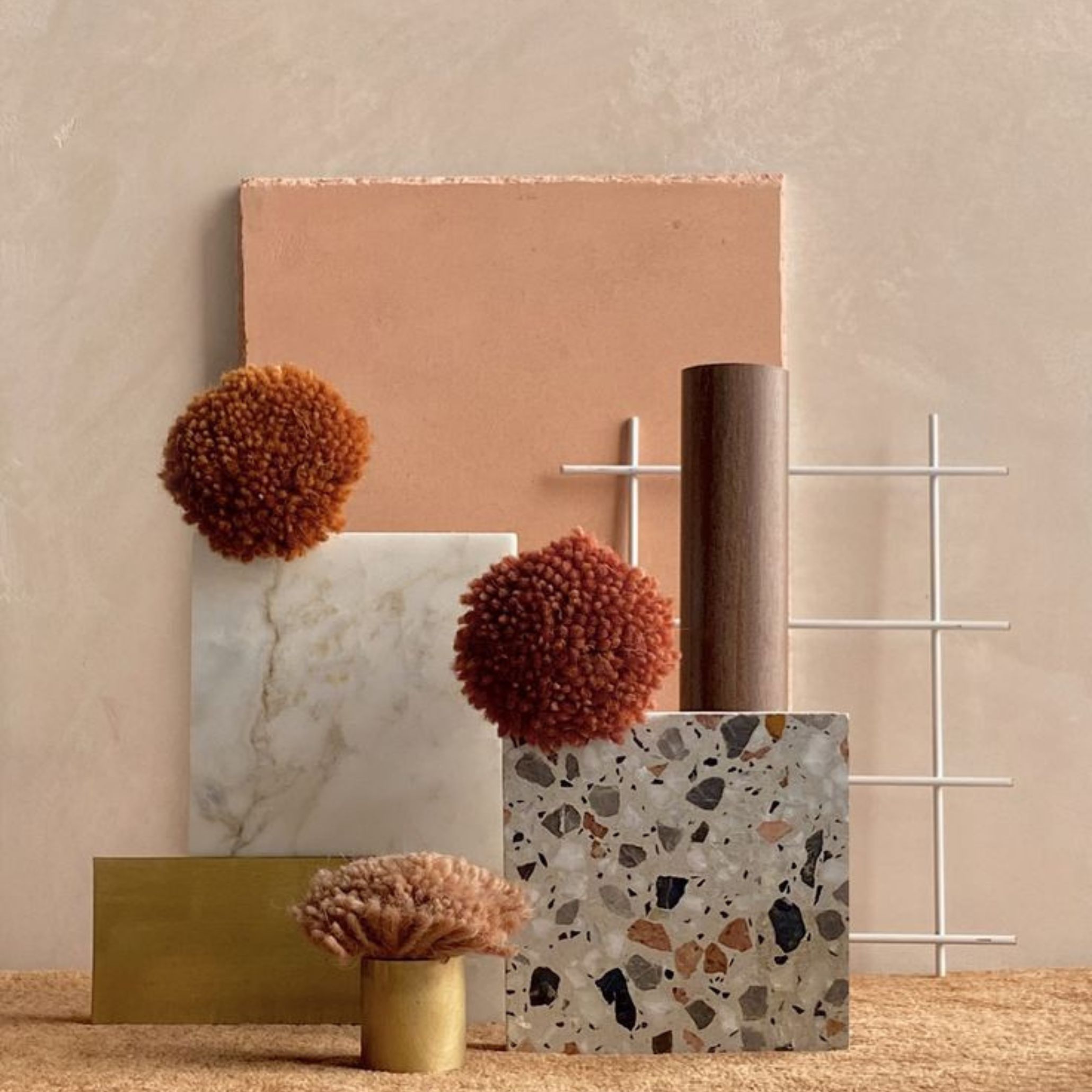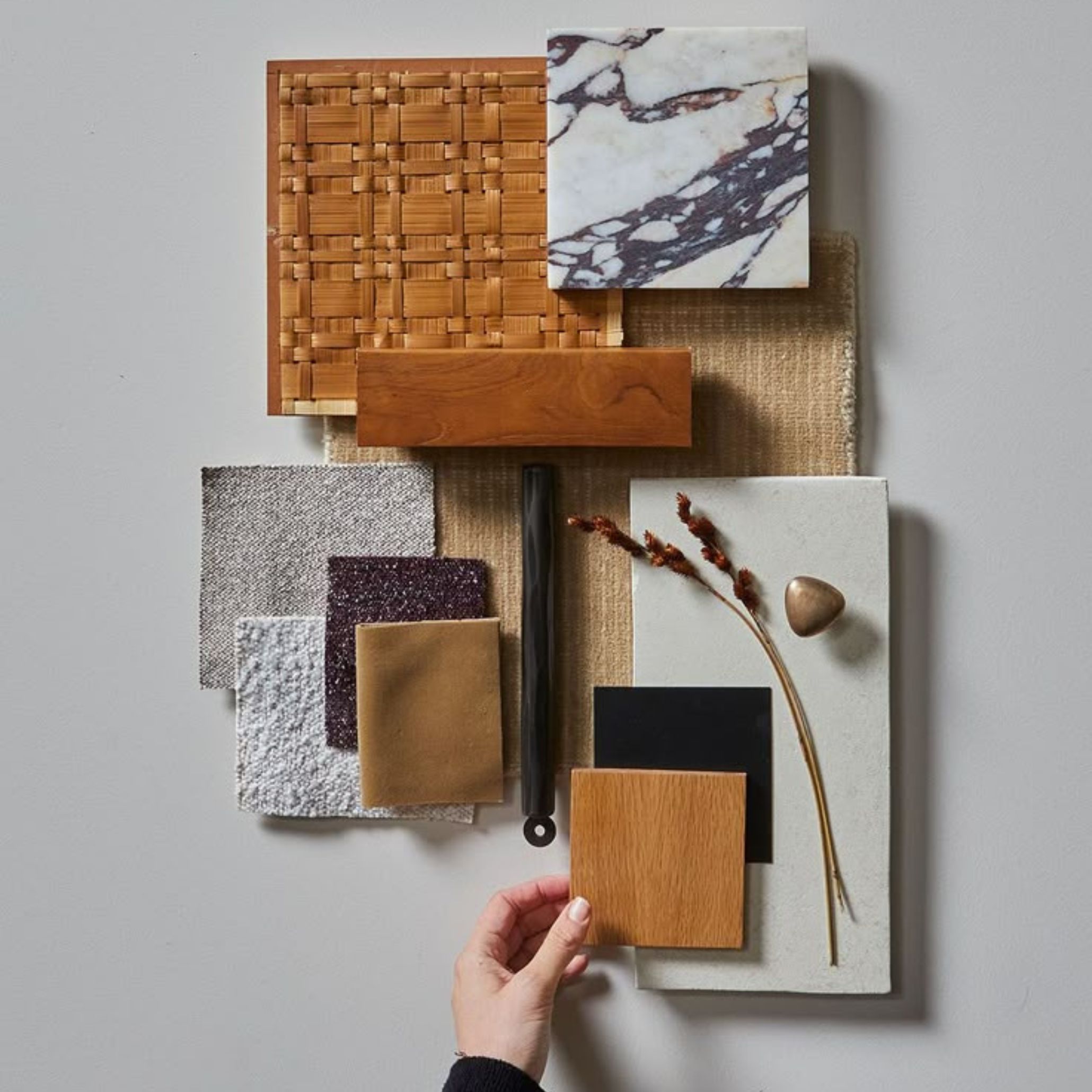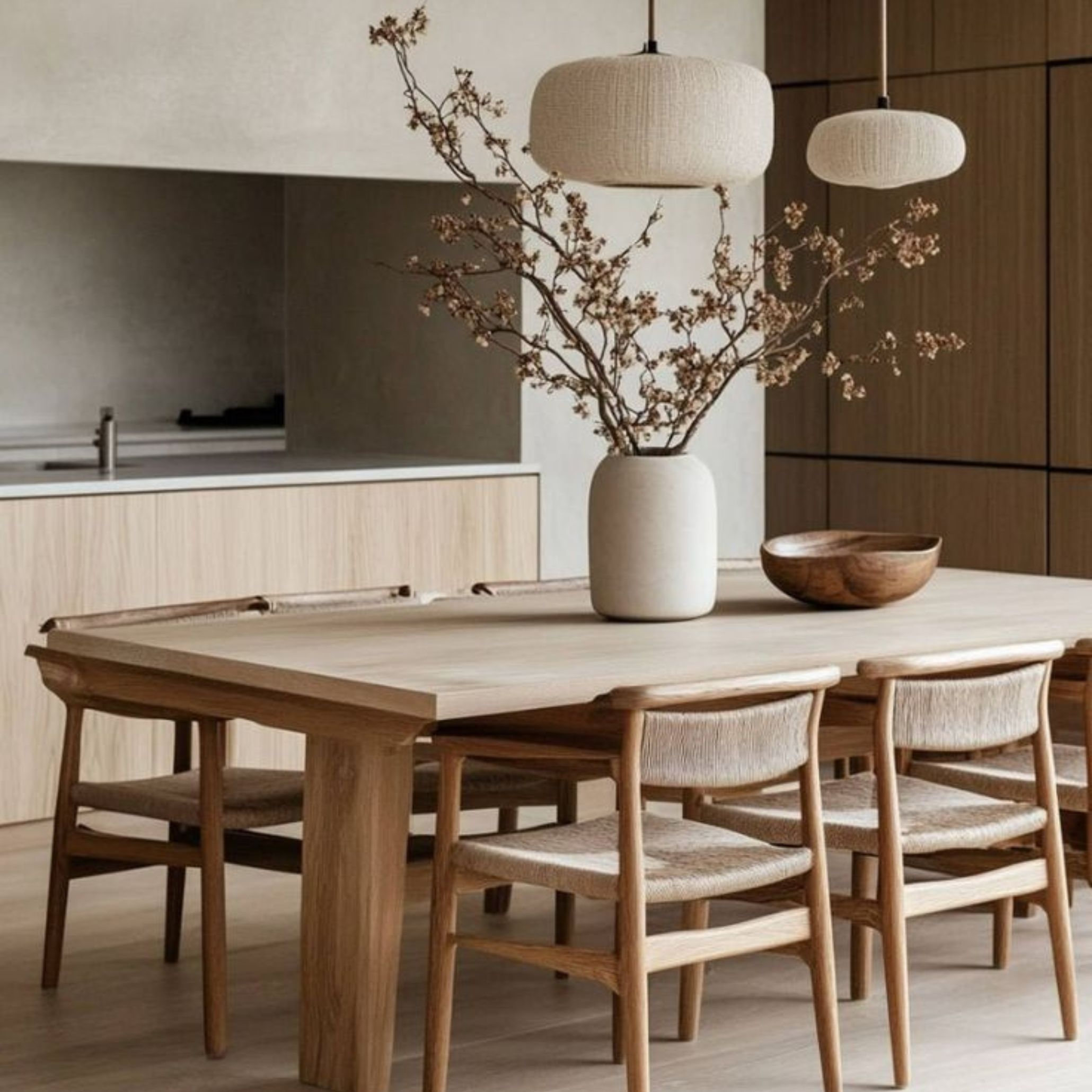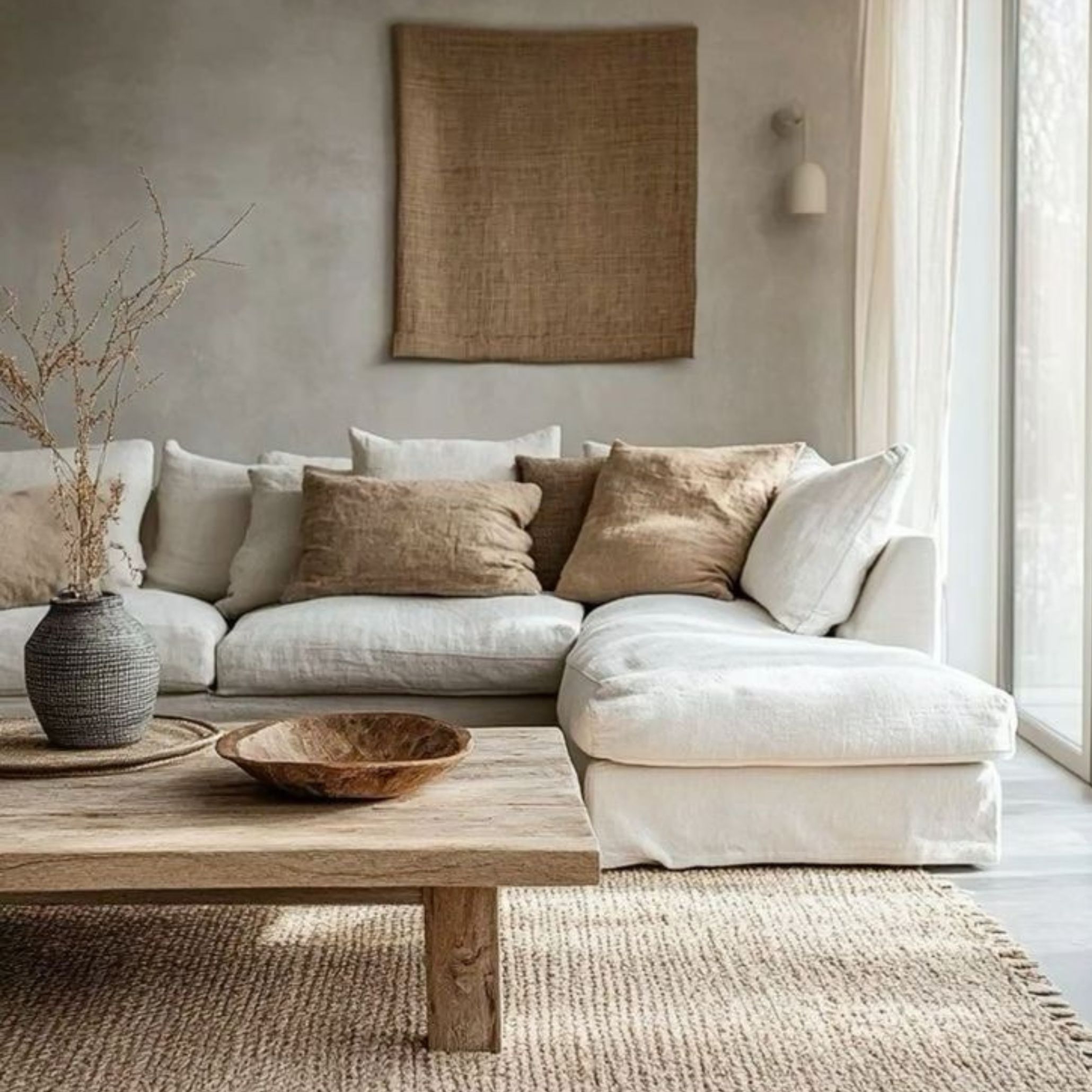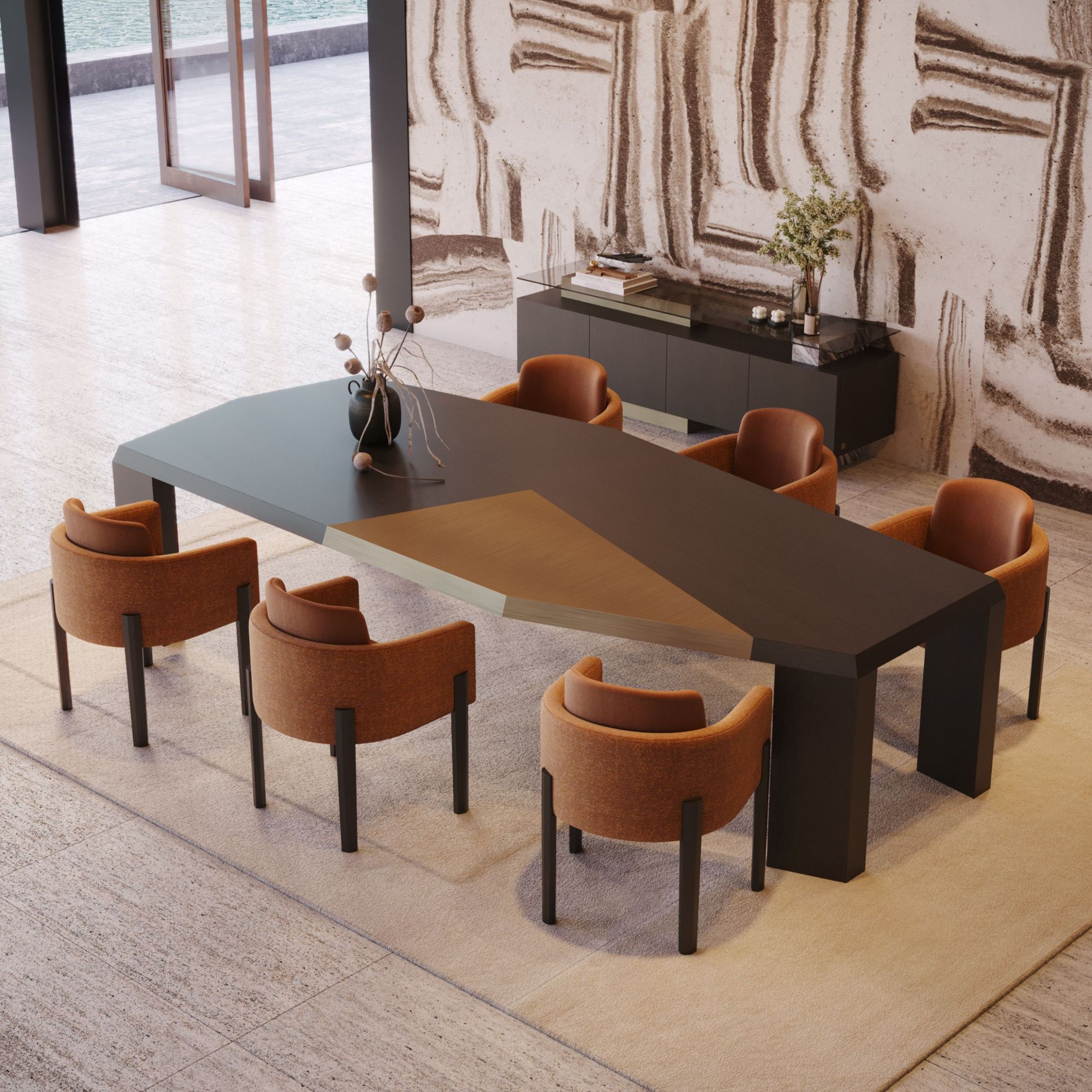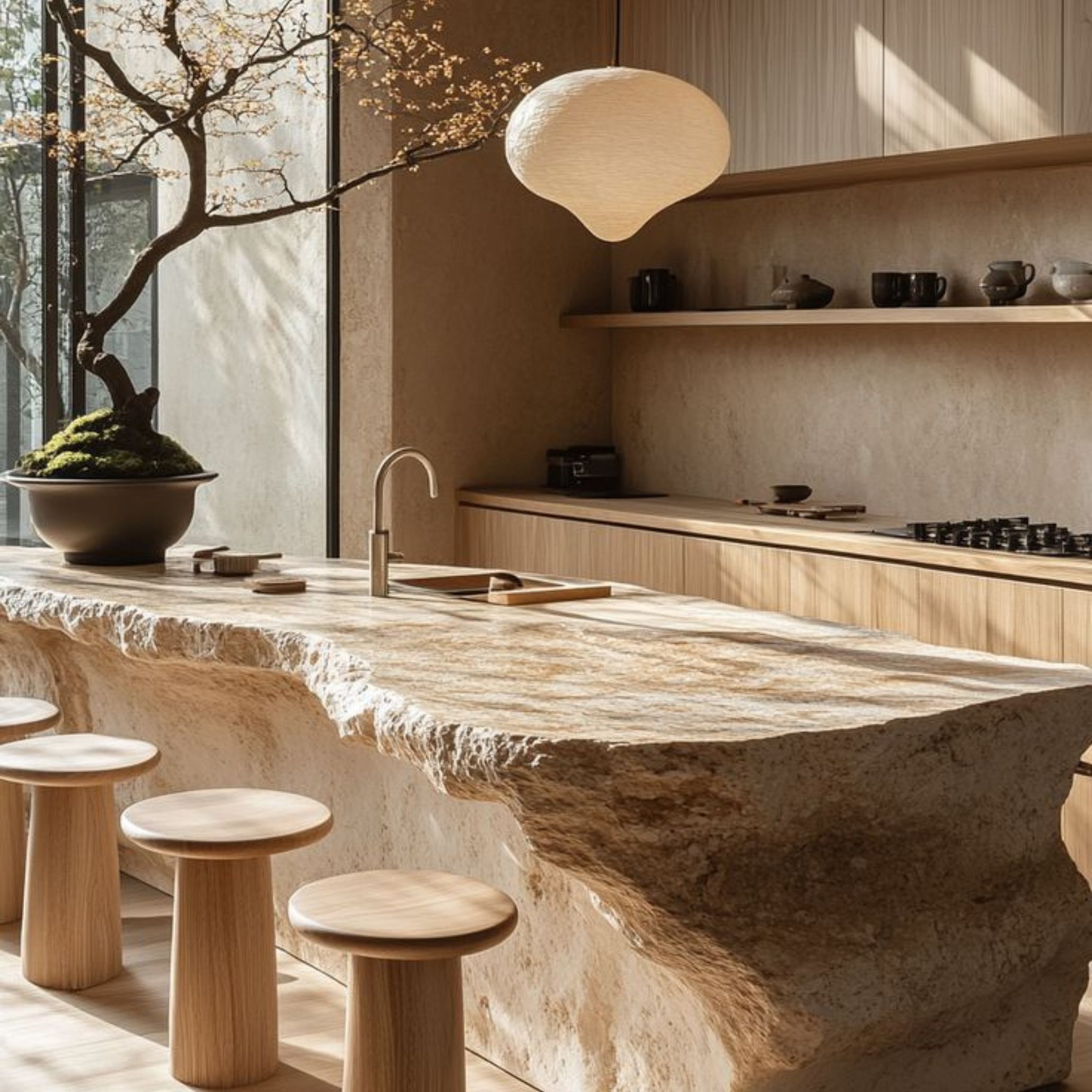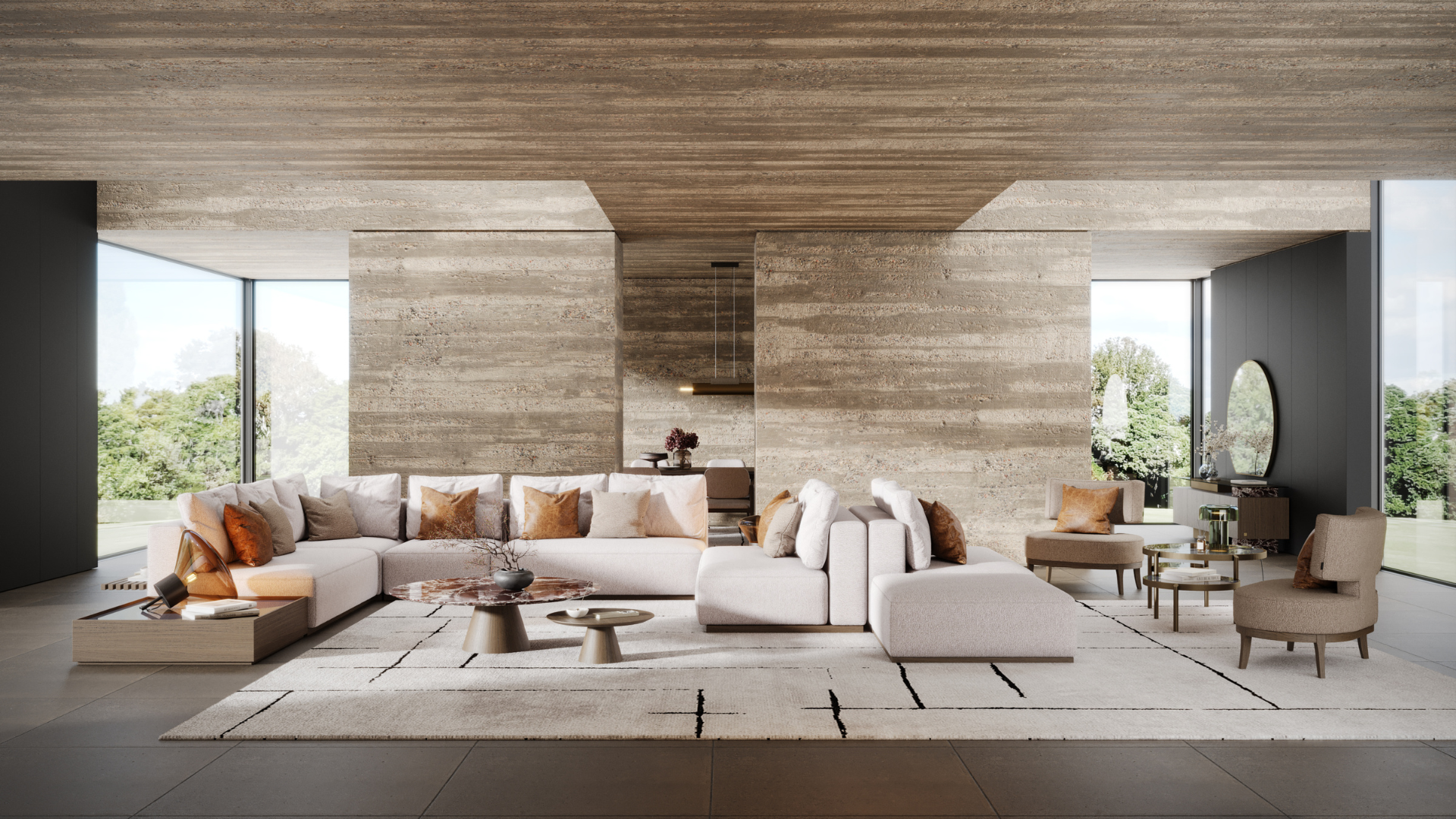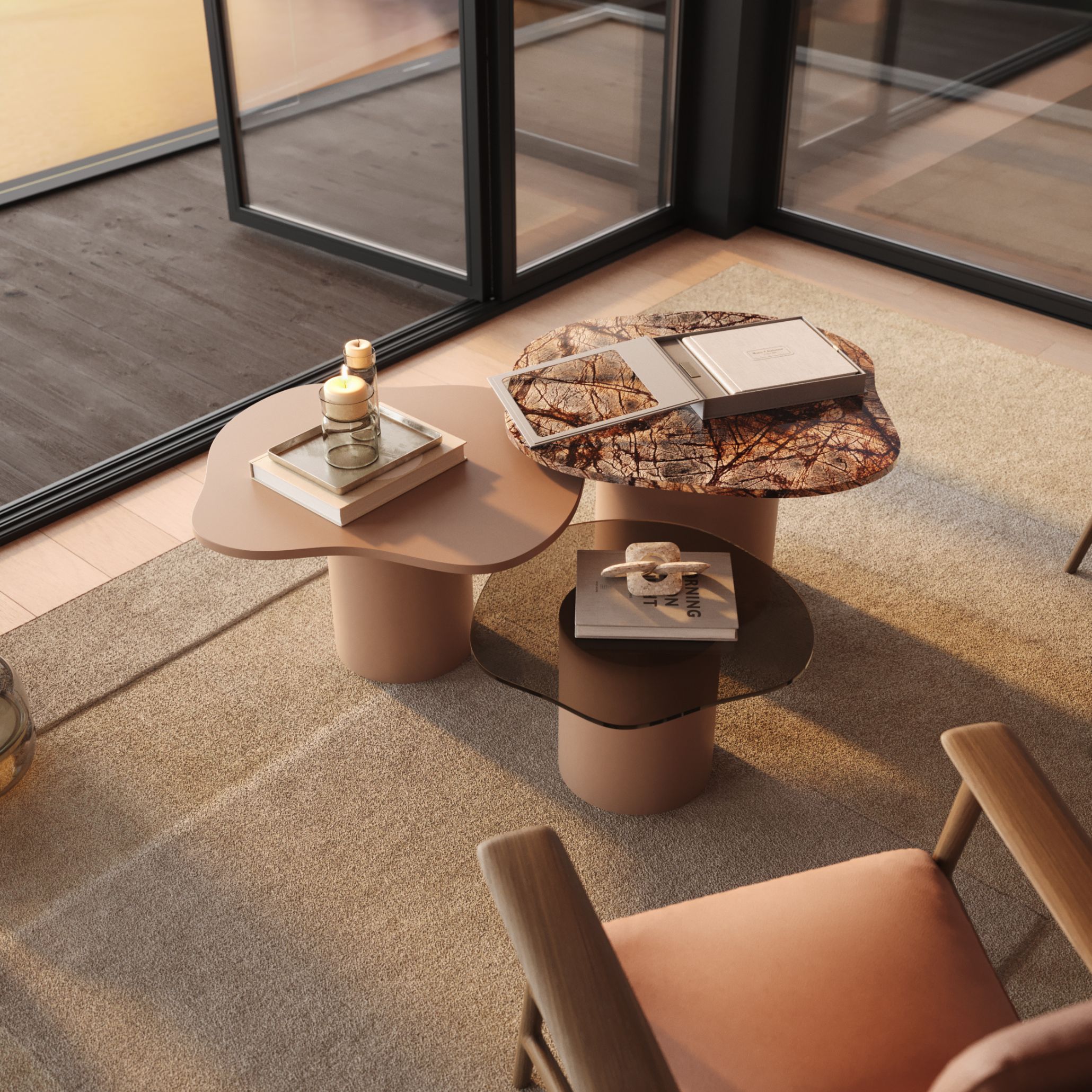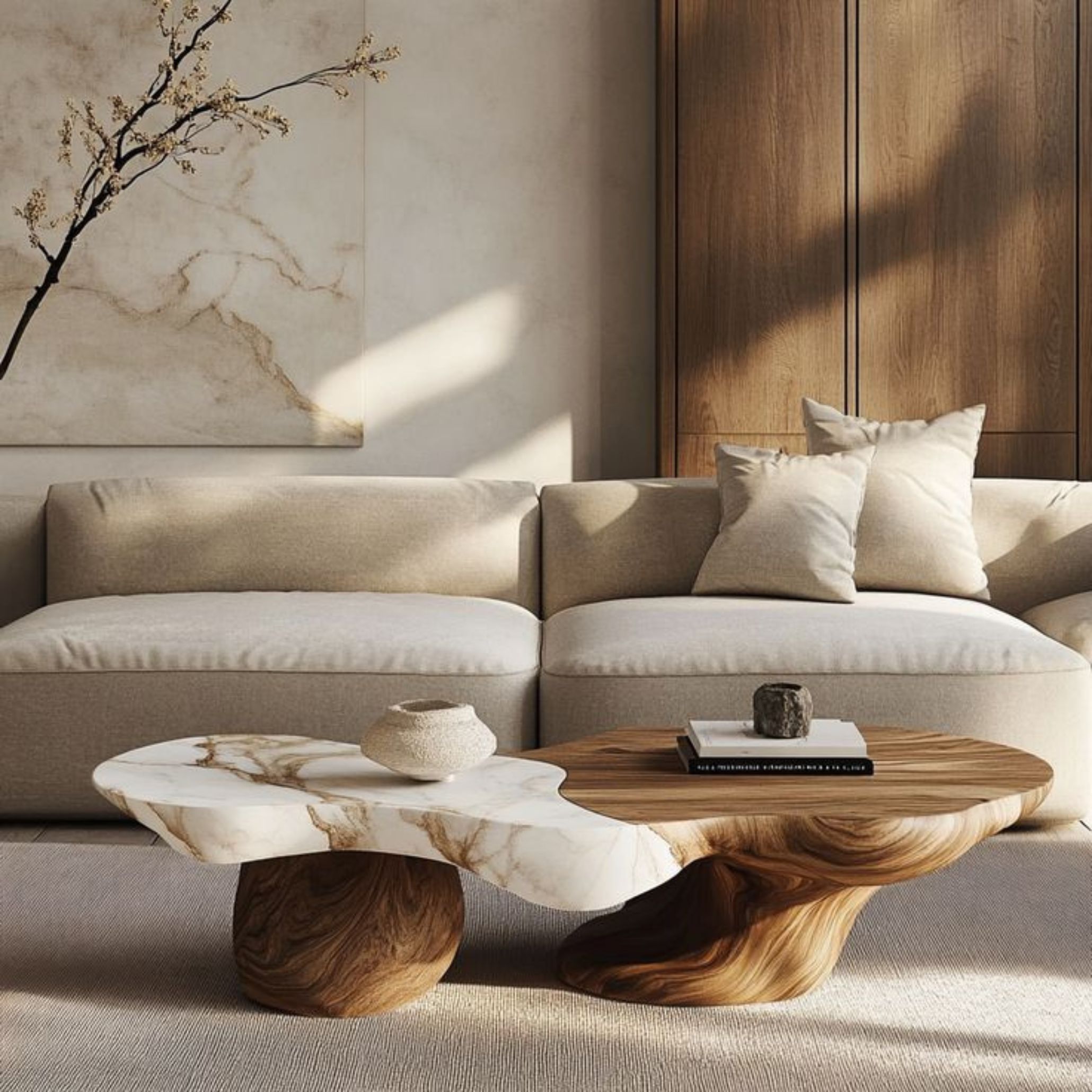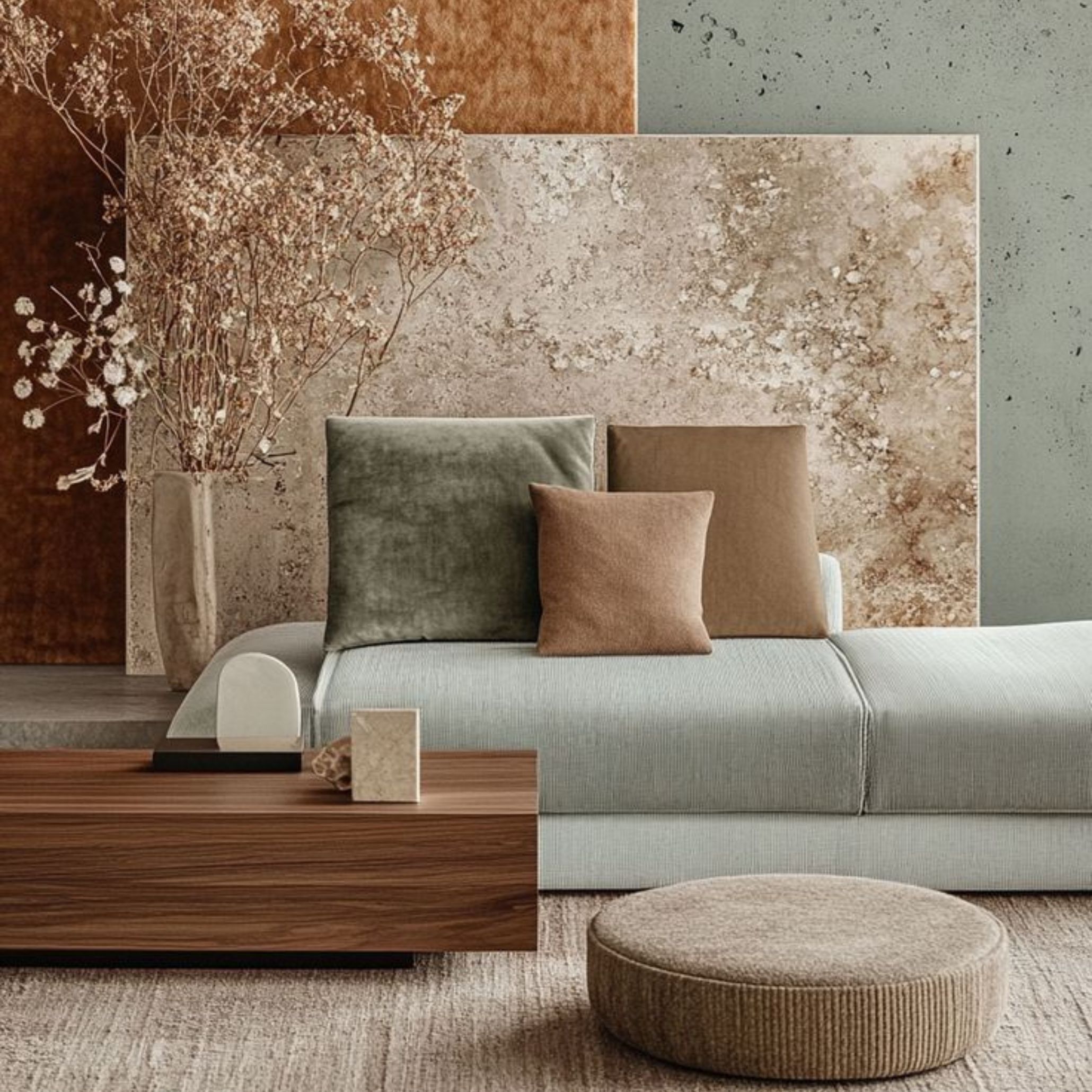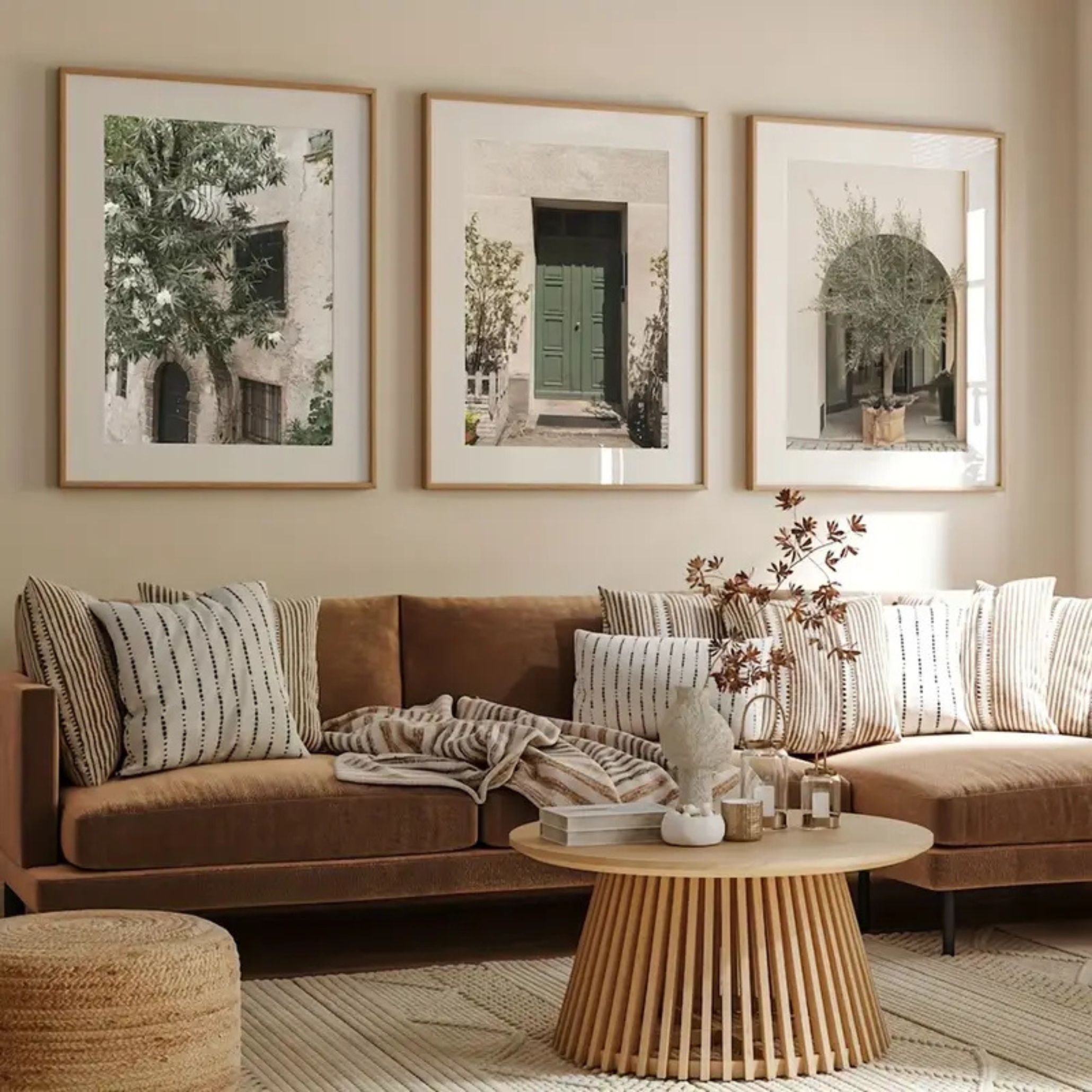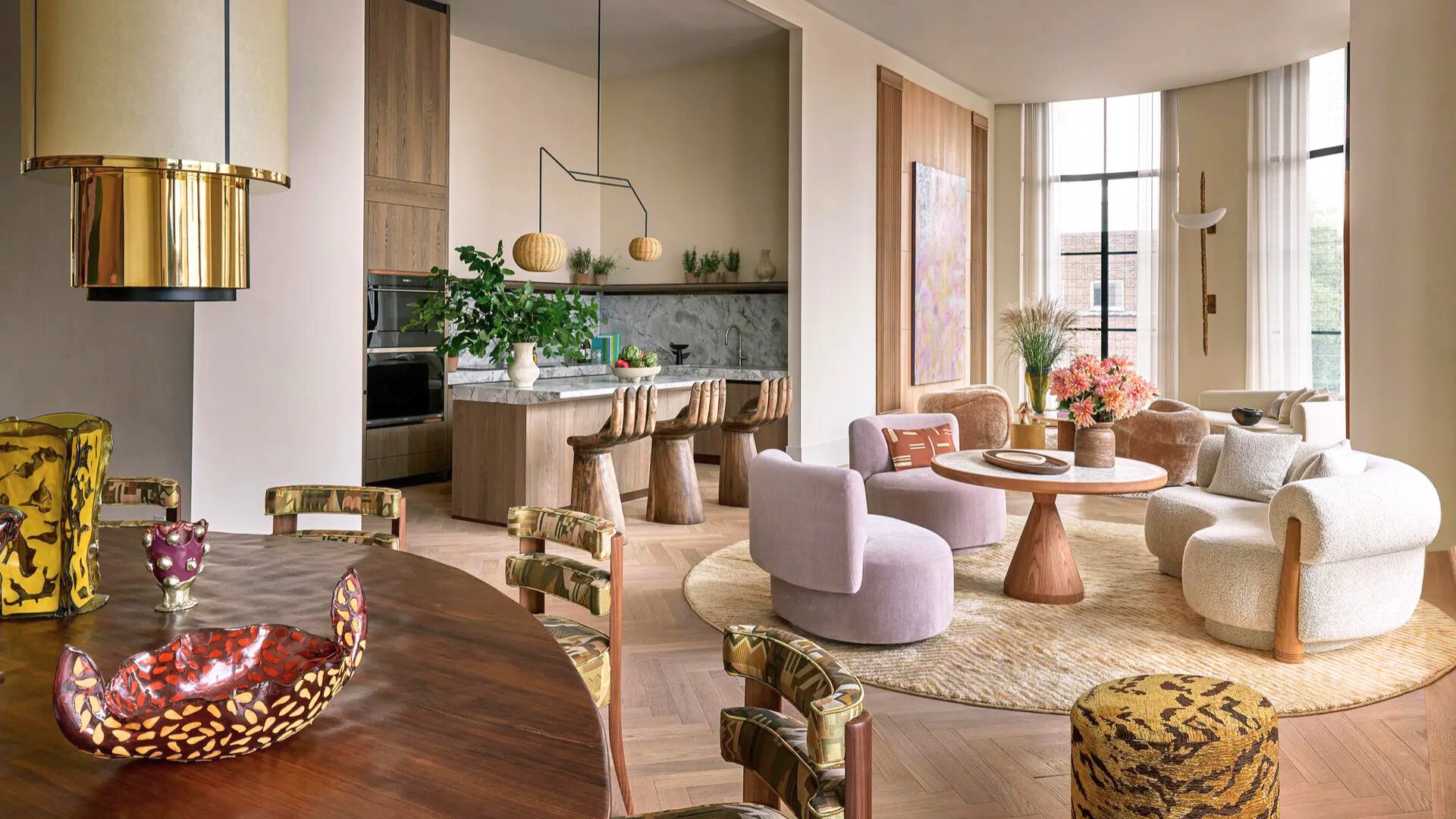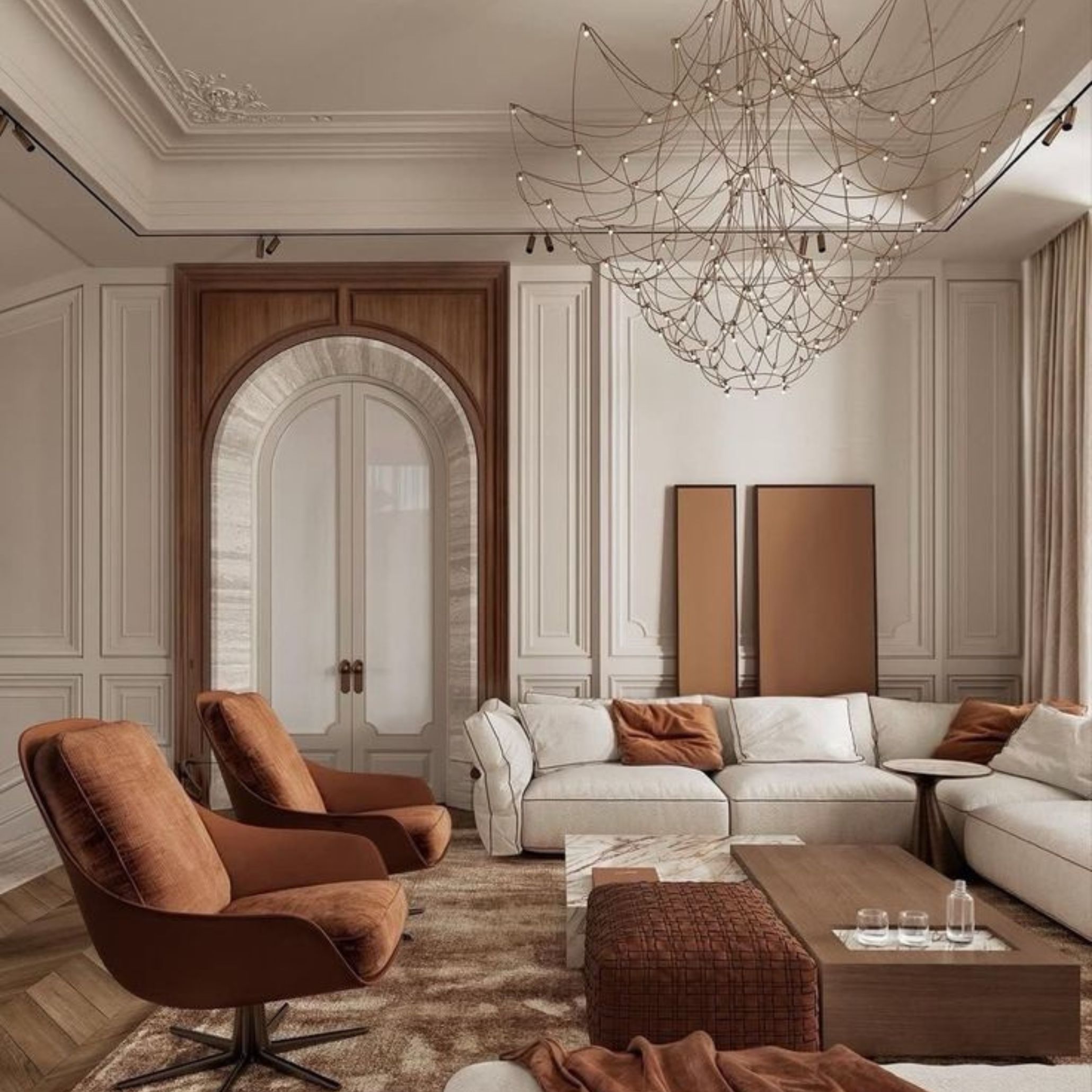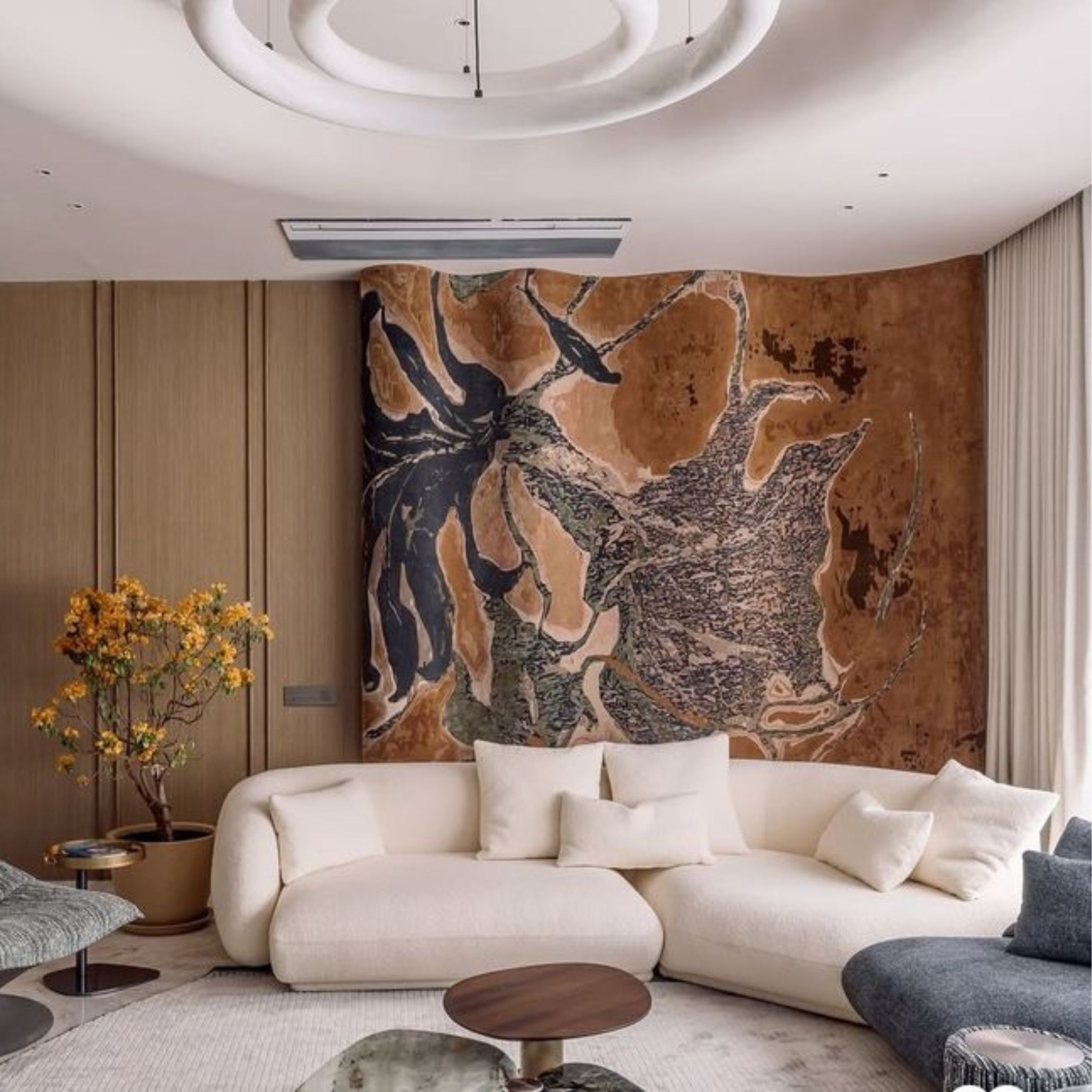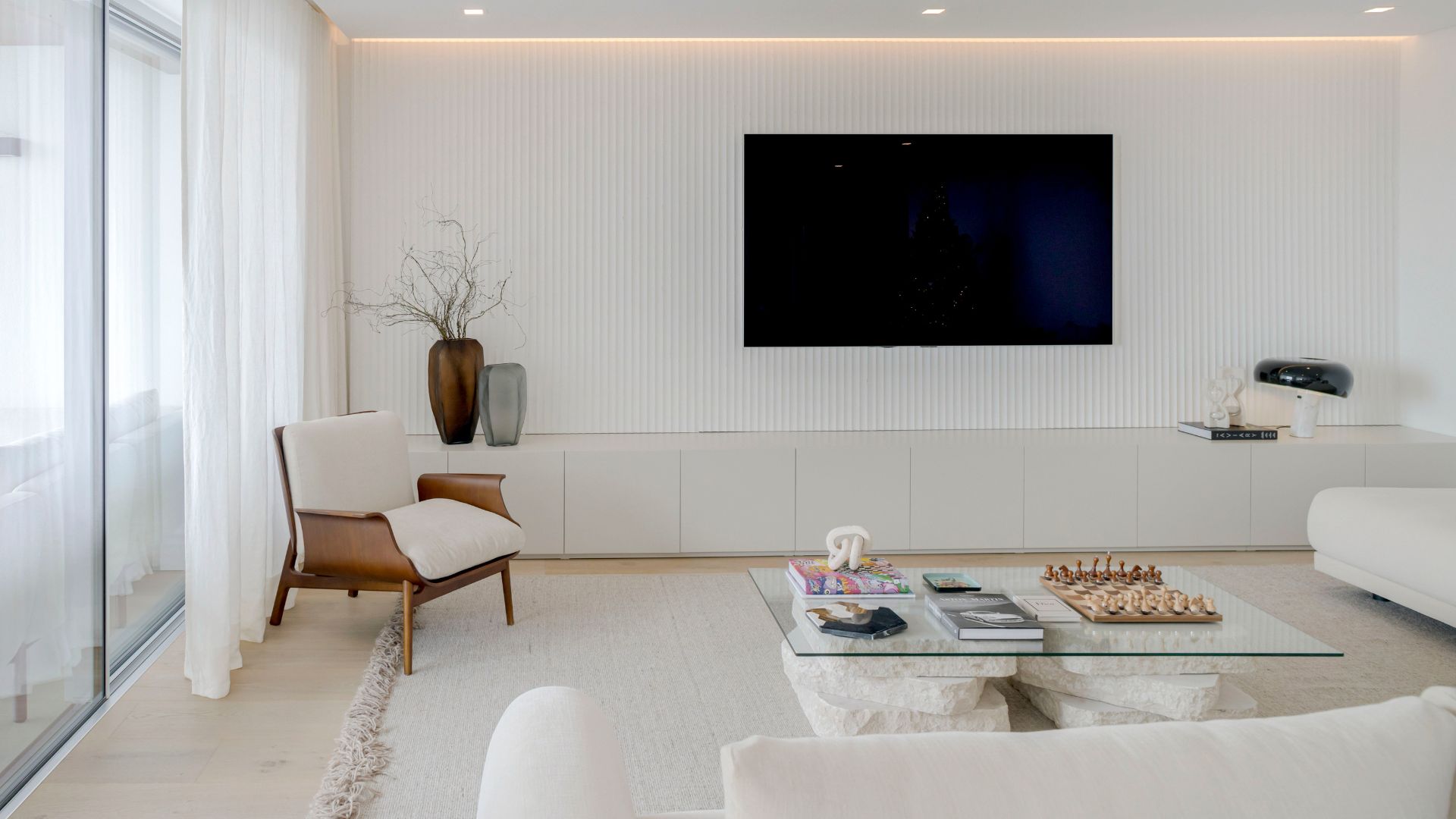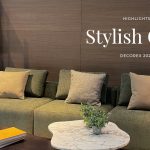Mix and Match: How to Mix Materials in Interior Design
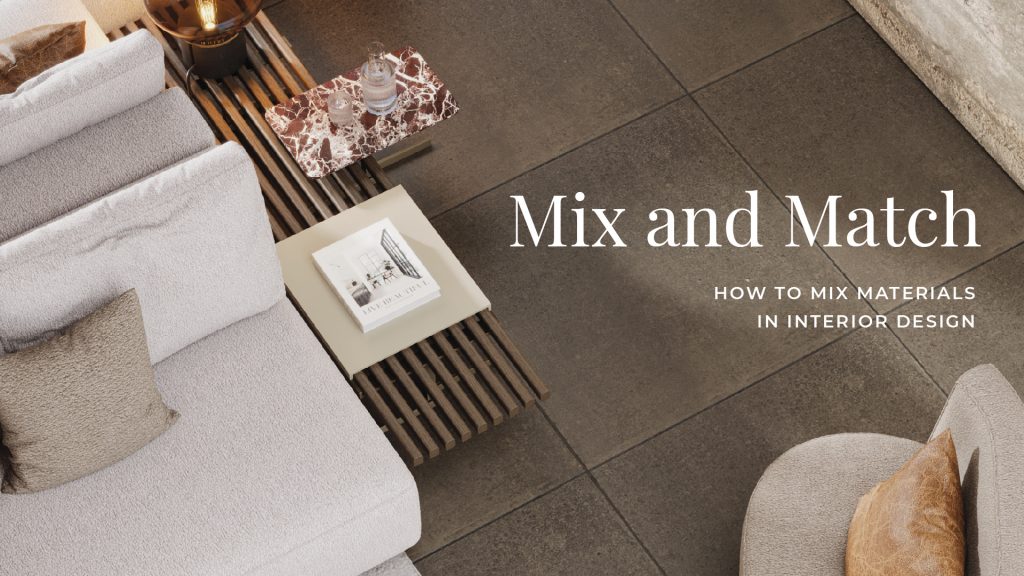
In the world of interior design, the art of mixing materials has become a key approach for creating spaces that are rich in texture, depth, and emotion.
Rather than adhering to a single material or finish, today’s most captivating interiors celebrate the beauty of contrast and the harmony found in diversity. Through the careful combination of textures, finishes and tones, designers craft spaces that are not only visually appealing but also deeply emotional.
In this article, we explore the transformative power of the mix of materials, key principles to master the art, and the inspiring trends shaping interiors in 2025.
- Mixed Materials Living Room
The Power of Material Diversity
Materials carry an ability to tell stories. Designers bring life to spaces by combining wood, stone, glass and fabrics, generating visual interest and welcoming experiences. The mix of materials allows interiors to convey multi-faceted narratives, ranging from the cozy charm of wood in design to the sophisticated elegance of polished stone or the lightness of clear glass. When combined thoughtfully, materials not only enrich the visual design of a space but also inspire a deep emotional bond, allowing each area feel carrefully designed and vibrant.
- Mix and Match | Source: Pinterest
- Mix and Match | Source: Pinterest
Key Principles for Mixing Materials
Mastering the art of mixing materials requires a delicate balance between creativity and restraint. While the possibilities are endless, there are guiding principles that ensures that diversity translates into beauty, not chaos.
Less Is More
While it may be tempting to introduce a abudance of materials, true elegance lies in restraint. To avoid overcrowding the space with too many elements, focus on a few key materials that complement each other, allowing each one to shine without overwhelming the composition. Following this Less is More principle allows you to create spaces that breathe sophistication and clarity.
- Less is More interior | Source: Pinterest
- Less is More interior | Source: Pinterest
Create Focal Points
Highlight a material or finish as the centerpiece of a room – a marble countertop or an exquisitely crafted wooden table, to establish a clear focal point within the space. By building the rest of the material palette around this focal point ensures that every other element supports the narrative, creating a cohesive and powerful visual impact.
- Escarpa Dining Table
- Stone Focal Point | Source: Pinterest
Maintain a Cohesive Color Palette
Color is an essential and invisible element that ties different materials together. Regardless of whether you are working with complementary or monochromatic schemes, ensure that the colors across all materials relate to one another. A cohesive color palette fosters unity, enabling the diversity of textures and finishes to harmonize effortlessly.
- Cohesive Color Palette Interior
Trends for 2025
In 2025, the spirit of mixing materials continues to thrive, with an emphasis on authenticity and skilled craftsmanship. Designers are increasingly combining the tactile richness of vairous materials to develop layered and dynamic spaces.
Wood, Stone, and Glass
Natural elements are taking center stage and being reimagined in exciting new ways. Wood in interior design adds warmth, grounding spaces with its organic beauty. Sculptural stones, such as marble, bring a timeless and architectural presence, offering contrast through solidity and texture. Meanwhile, glass introduces lightness and transparency, balancing heavier materials and opening up the space with elegant fluidity. Together, these elements create interiors that are both refined and deeply connected to nature, such as the Natur set of side tables that represents the perfect harmony between wood, marbel and glass.
- Natur Set of Side Tables
- Wood and Marble furniture | Source: Pinterest
Fabrics and Textiles
While hard materials establish structure, fabrics and textiles infuse softness and comfort into interiors. In 2025, the emphasis is on authenticity, featuring natural materials such as linen and organic cotton alongside the handcrafted techniques and textures. Layering textiles through upholstered furniture and textured accessories enhances comfort and sensory richness, completing the material palette with a touch of warmth. It is through this interplay of strength and softness that interiors achieve theis most captivating form.
- Mix of Fabrics and Textiles | Source: Pinterest
- Mix of Fabrics and Textiles | Source: Pinterest
Common Mistakes to Avoid When Mixing Materials
Even the most creative ideas can falter without a clear considered approach. Avoiding these common missteps ensures that a diverse material palette enhances, rather than disrupts, the balance of a space.
Mixing Too Many Styles
A clear design vision is essential. Combining multiple styles without direction can create a disjointed, chaotic look. It is advisable to establish one dominant style, occupying about 70-80% of the design narrative, and secondary styles can then be introduced in subtle accents, enriching the space without detracting from its core identity
- Interior with Mixed Styles | Source: Pinterest
Ignoring Scale and Proportion
Materials must be chosen with balance, oversized finishes can overwhelm small rooms, while delicate materials may be lost in expansive interiors. Every element must feel proportionate to its surroundings, reinforcing the spatial harmony rather than disrupting it, ensuring that the composition feels balanced and intentional.
- Balanced Interior with Rich Materials | Source: Pinterest
- Cohesive Interior with Bold Focus | Source: Pinterest
Lacking a Unifying Element
Without a unifying foundation, the interplay of different materials can appear chaotic.
Establishing a base material, tone, or design ensures that even the boldest contrasts feel intentional. Every material selected should relate back to this foundational element, creating a cohesive and elevated whole.
- Serene Interior with a Unifying Element
In 2025, mixing materials is a powerful strategy for designing interiors that feel both expressive and timeless. Thoughtful a balanced and clear vision, each material plays a room in creating a a cohesive whole, where contrast becomes harmony and design becomes storytelling.


